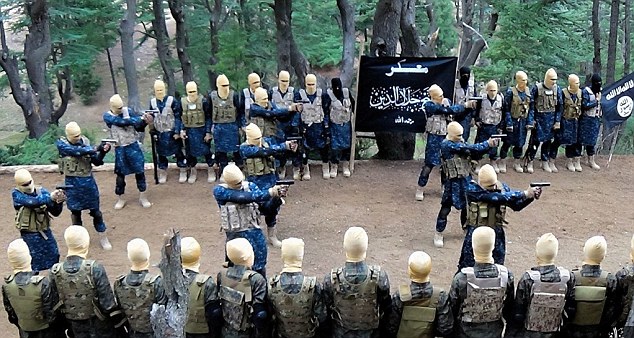
The Islamic State group in Afghanistan is now more threatening than the Taliban to both Afghan and Western interests, according to some experts, who warn that many of its fighters are moving there from the Middle East. It was in late 2014 when the Islamic State, known formerly as the Islamic State of Iraq and Syria (ISIS), made its initial appearance in Afghanistan, like reported by intelnews.org.
Soon an official Islamic State affiliate emerged in Afghanistan, calling itself Islamic State – Khorasan Province. Security observers estimated the group’s strength to below 150 armed fighters, most of them Pakistani Taliban who had sought refuge in Afghanistan, or small cadres of Afghan Taliban who pursued a more globalized Salafist agenda.
Aided by the growing worldwide notoriety of its parent organization in Iraq and Syria, the Islamic State – Khorasan Province grew in size in 2015 and 2016. Its armed cadres were joined by Salafist-jihadists from Central Asia and the Indian subcontinent, as well as by radical Muslims from China’s northwestern Xinjiang Province. In 2016, as the Islamic State began retreating in the Middle East, fighters from there gradually began to make their way to Afghanistan, adding to the numerical strength of the organization’s Khorasan Province branch.
Today, the strength of the Islamic State in Afghanistan is concentrated in four northeastern Afghan provinces, Nuristan, Nangarhar, Kunar and Laghman. Nearly all of these provinces border Pakistan and none are far from the Afghan capital Kabul. According to the Associated Press’ Kathy Gannon, who wrote an extensive article about the current state of the Islamic State in Afghanistan, the primary military goal of the group’s Khorasan Province branch is to expand its territory. Some believe that the Islamic State aspires to one day conquer Jalalabad, a city of nearly 400,000 residents that serves as the administrative center of Nangarhar Province.
This aspiration is not delusional; Gannon cites an unnamed US intelligence official who insists that the Islamic State is now a more deadly threat than the Taliban to Afghan and Western security. Islamic State fighters are acquiring increasingly sophisticated military hardware, which enables them to broaden their tactical capabilities. Additionally, unlike the Taliban, who largely follow a policy of limiting their attacks on government and military targets, the Islamic State appears to be deliberately targeting civilians. What is more, security experts see these attacks as “practice runs for even bigger attacks in Europe and the US”. In other words, the Islamic State – Khorasan Province is actively using its Afghan base to plan “external attacks in the US and Europe [and] it’s just a matter of time” before these occur, says a US intelligence official.
According to Gannon, the growth of the Islamic State in Afghanistan is so alarming that some security experts are beginning to see the Taliban as a potential partner of the West in containing the danger. One expert says that the Taliban remain bigger and stronger than the Islamic State, and their fighters “know the terrain [and] territory” of northeastern Afghanistan. Furthermore, the Islamic State has declared war on the Taliban and the two groups are active adversaries in the region. Gannon claims that Russia would not be opposed to the idea of utilizing the Taliban to fight off the Islamic State. As intelNews reported last month, Russia’s Federal Security Service warned that thousands of Islamic State fighters were operating in Afghanistan’s northern border regions and were attempting to destabilize former Soviet Republics with substantial Muslim populations.


